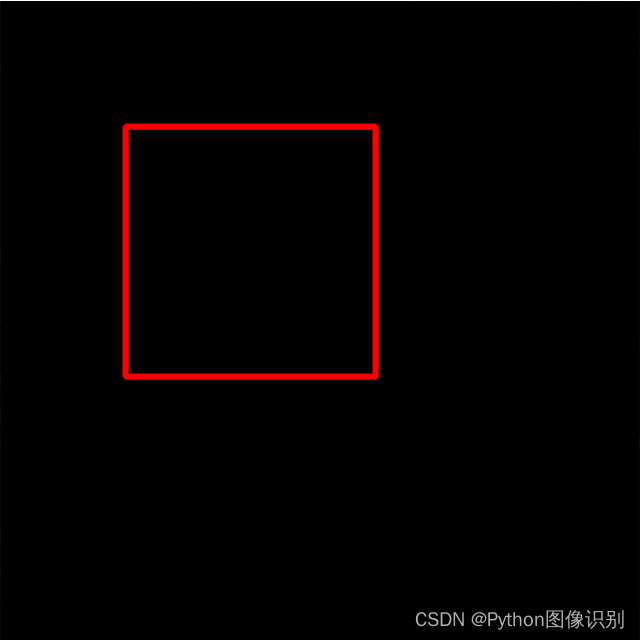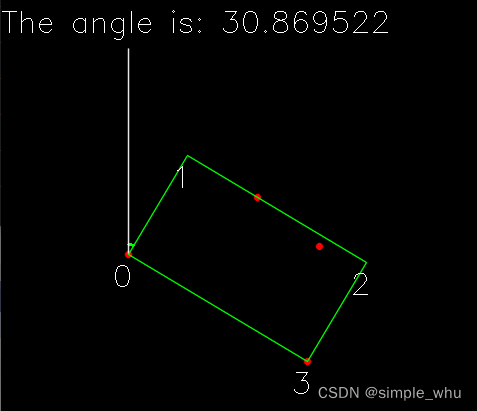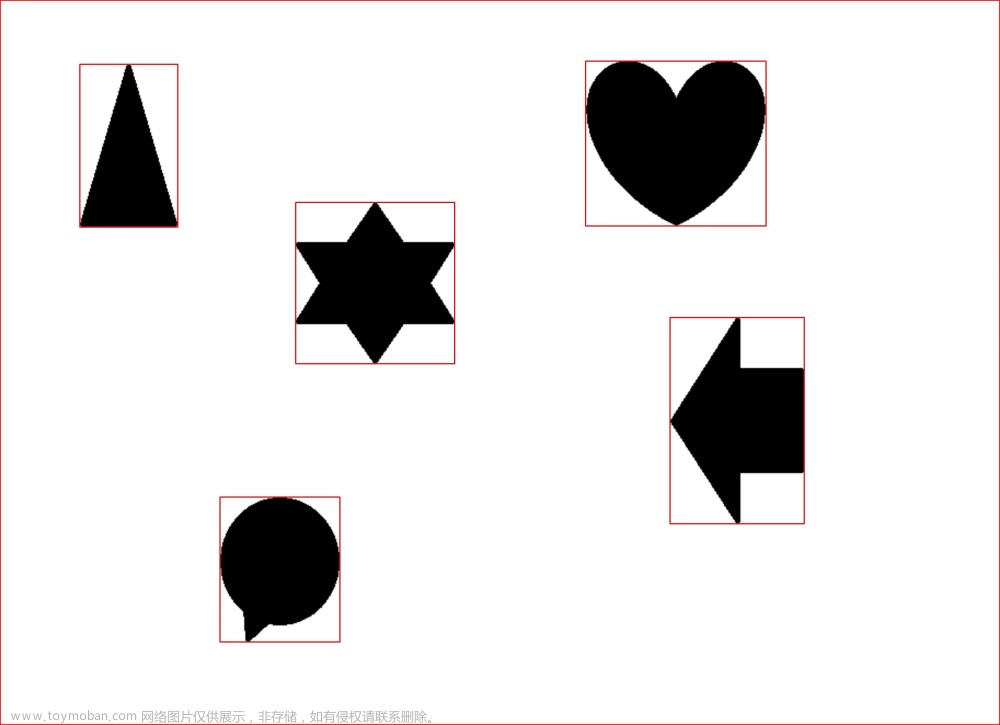外接矩形、外接圆:
1 import cv2 2 import numpy 3 4 img = cv2.imread('../img/img.png', -1) 5 ret, thresh = cv2.threshold(img, 127, 255, cv2.THRESH_BINARY) 6 contours, hier = cv2.findContours(thresh, cv2.RETR_EXTERNAL, cv2.CHAIN_APPROX_SIMPLE) 7 8 for c in contours: 9 # 寻找平行于 x轴、y轴 的外接矩形坐标 -> 左上角坐标、宽度、高度 10 rectangle = cv2.boundingRect(c) 11 x, y, w, h = rectangle 12 # 绘制外接矩形 13 cv2.rectangle(img, (x, y), (x+w, y+h), (0, 255, 0), 2) 14 15 # 寻找包含前景图的 可旋转 最小外接矩形 -> 中心点坐标、宽度、高度 16 rect = cv2.minAreaRect(c) 17 # 寻找旋转矩形的四个顶点 -> 左上角、右上角、右下角和左下角的顶点坐标 18 box = cv2.boxPoints(rect) 19 # 取整 20 box = numpy.int0(box) 21 # 绘制外接矩形,对box打包成列表是因为drawContours希望接收为tuple or list 22 # 或者说是一个iterable 23 cv2.drawContours(img, [box], 0, (0, 0, 255), 3) 24 25 # 计算最小外接圆 -> 圆心坐标、半径 26 (x, y), radius = cv2.minEnclosingCircle(c) 27 # 取整 28 center = int(x), int(y) 29 radius = int(radius) 30 # 绘制圆形 31 img = cv2.circle(img, center, radius, (0, 255, 0), 2) 32 33 34 img = cv2.cvtColor(img, cv2.COLOR_GRAY2BGR) 35 img = cv2.drawContours(img, contours, -1, (0, 255, 0), 2) 36 cv2.imshow('', img) 37 cv2.waitKey() 38 cv2.destroyAllWindows()
文章来源地址https://www.toymoban.com/news/detail-749020.html
1、cv2.boundingRect() Method 和 cv2.minAreaRect() Merhod:前者只寻找和 x、y轴 平行的矩形,后者则可以出现旋转角度。
2、cv2.drawContours() Method:第二个参数接收的是轮廓信息,但是这个轮廓信息需要以 tuple or list or set类型(或者说是iterable)才可以传入。
请注意:当我们对 box 变量进行 tuple() list() set() 操作时,都会报错,这是因为,在针对numpy数组进行可迭代转换时,前面的三种方式,都会对numpy数组中的每个元素都视为单独的一个 ”列表元素“ ,而不是将整个 box 视为一个列表 这会导致如:
box = [[ -8 410] [ 57 -21] [444 37] [379 469]],
在使用 list() 后:
box = [array([ -8, 410], dtype=int64), array([ 57, -21], dtype=int64), array([444, 37], dtype=int64), array([379, 469], dtype=int64)]
但是我们需要的正确的格式是:
[array([[ -8, 410], [ 57, -21], [444, 37], [379, 469]], dtype=int64)]
总结:针对numpy数组转换为可迭代对象时,[ ]、(, )、{ } 和 list()、tuple()、set() 会得到不用的结果,即是否会将元素视为单独的一个”列表元素“,这种情况只针对 numpy 数组(就笔者目前所接触过的各种类型)。文章来源:https://www.toymoban.com/news/detail-749020.html
到了这里,关于【Python】【OpenCV】绘制外接矩形、外接圆的文章就介绍完了。如果您还想了解更多内容,请在右上角搜索TOY模板网以前的文章或继续浏览下面的相关文章,希望大家以后多多支持TOY模板网!












